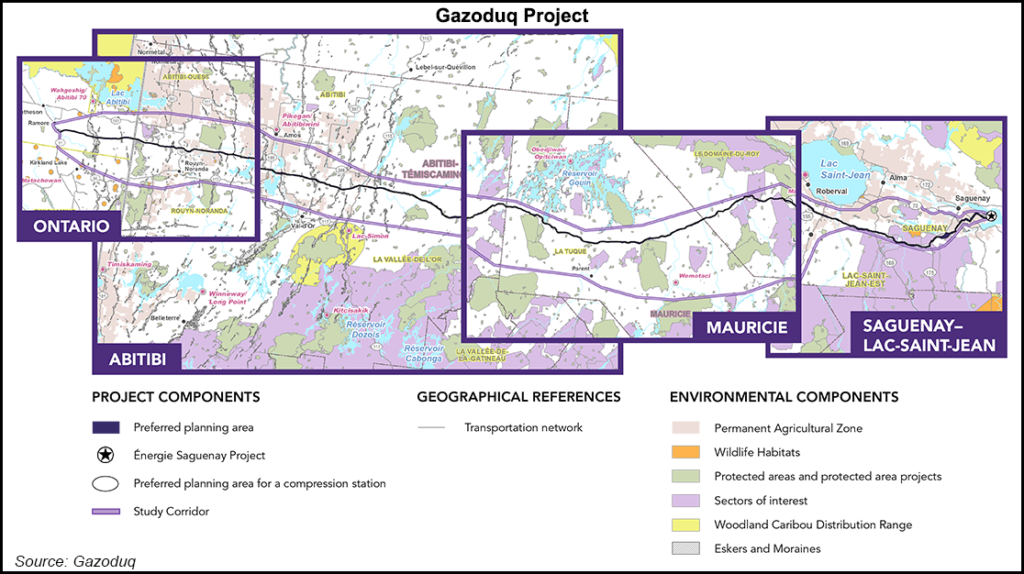Regulatory | Infrastructure | LNG | LNG Insight | NGI All News Access | NGI The Weekly Gas Market Report
New Canadian Regulatory Apparatus Reviews First Natural Gas Pipeline Project
A natural gas project in Quebec and Ontario has begun the first test case of the ability to build pipelines under the revamped Canadian regulatory framework.

The two-month-old Impact Assessment Agency of Canada (IAAC) accepted and called for public responses to the Gazoduq project description of a 780-kilometer (470-mile) line from eastern Ontario to central Quebec. The action marked the first venture into review and approval of resource projects by a combination of the IAAC, formerly the Canadian Environmental Assessment Agency, and the Canada Energy Regulator (CER).
Federal legislation that went into force in late August created the regulatory structure with a mandate to police the effect of projects on women, indigenous communities, health/climate change as well as the physical environment of land, air, water and wildlife.
The US$4.5 billion Gazoduq is the planned conduit for western production to Energie Saguenay, a liquefied natural gas (LNG) terminal worth $7.5 billion, named after its proposed location 210 kilometers (130 miles) east of Quebec City.
GNL Quebec, a partnership of Breyer Capital and Freestone International, holds a 25-year gas export license for up to 1.6 Bcf/d, and is targeting 2021 to start construction.
The mammoth plan was launched in California by the Silicon Valley investors sponsoring the pipeline and the export terminal. The projects belong to GNL. Preliminary community consultations have already spawned opposition to the GNL projects and rejection by academic scientists.
A letter written by 150 campus scholars last summer said LNG exports generated global greenhouse gas emissions and labeled their tankers a threat of “deafening underwater noise” against a prized beluga whale refuge in the Gulf of St. Lawrence.
The re-elected Liberals in Ottawa, the Coalition Avenir Quebec government and the 32-member Bloc Quebecois in the national Parliament are neutral on the pipeline and terminal proposals as they await results from the impact assessment.
The IAAC and CER regulatory combination sets only a starting date for the impact assessment, a deadline of Nov. 12 for public comment. The procedure is described as an “initial” stage to generate requests for more information that the agencies need to fulfill their wide-ranging review mandate.
© 2024 Natural Gas Intelligence. All rights reserved.
ISSN © 1532-1231 | ISSN © 2577-9877 | ISSN © 1532-1266 |
